Ambassadors
2019 Ambassadors
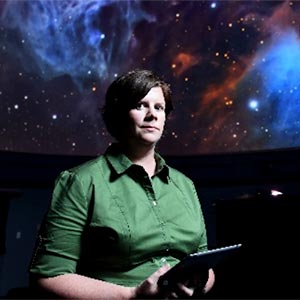
Amy Barraclough
Amy Barraclough, Director of the Edelman Planetarium at Rowan University, has loved informal education ever since she started working at the Allen F. Blocher Planetarium as a student presenter. It was there she realized she could make a career teaching the wonders of the night sky. After graduating with a BS in Physics, she became the Program Coordinator at the Planetarium at the University of Texas at Arlington (UTA) where she learned how to create original planetarium shows, began training the next crop of planetarium educators and completed her digital photography certificate. In 2014, she was awarded an Honorable Mention by the Arlington Museum of Art for her submission in the Image as Art photography competition. Amy was honored with the Digistar Users Group’s Jim Hashimoto Memorial Award in 2014 for her contributions to the planetarium field. She was also awarded an Outstanding Maverick Award from UTA in 2015 and Rowan’s PROFessional of the Month in September 2017. To stay informed and inspired she is an active member in the National Informal Science Education Network, Digistar Users Group, and the Middle Atlantic Planetarium Society. Since Amy became Director, the Edelman Planetarium has seen tremendous growth, with double its annual attendance and an increased public show schedule. A local magazine company, SJ Magazine, named Edelman Planetarium “Best Way to See the Stars” in 2017 and “Best Family Fun” in 2018. She hopes that her skills as an informal educator, mentor and photographer will make her an asset to the ACEAP team!
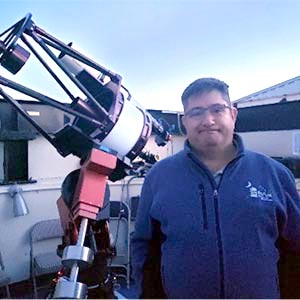
Art Borja
Art Borja is science teacher with more than 20 years’ experience at Crossroads School for Arts and Sciences in Santa Monica, CA. Art shares his passion for the sciences but particularly astronomy with his students. He often teaches options classes on astronomy topics not covered in science class. In addition to his teaching duties, Art is coach of the newly formed Crossroads robotics team and is co-director of the Elizabeth Mandell Music Institute House. Art graduated with a BS in biology from Tulane University and also attended the U.S. Naval Academy. After service in the navy, Art decided to teach science at the high school level. He completed the Boots to Classroom program at Jacksonville University, FL. He has continued to pursue advanced degrees including a JD from Western Michigan University, a MS in Psychobiology and Cognitive Neuroscience from the University of Barcelona, Spain; and he is at present finishing two con-current MS degrees in Space Studies from American Military University and a Masters in Astronomy and Astrophysics from Valencian International University. Art enjoys looking at the night sky and has started a recent astrophotography hobby inspired by the beginner and intermediate astrophotography workshops at Kitt Peak National Observatory. Art is constantly looking for ways to bring hands-on science experiences to his classroom and to excite students about science. He has previously participated in school science fairs, the NSTA Toshiba Exploravision program and the Civil Air Patrol Aeronautical curriculum. Art participated as a DaVinci Fellow at the University of Connecticut, and he was a science communication fellow aboard Robert Ballard’s exploration ship E/V Nautilus. Art has participated in educator workshops at JPL and the Goldstone Apple Valley Radio Telescope (GAVRT). He is a member of the Arizona and California Science Teacher Associations, NBTA, NSTA, The Planetary Society and Astronomers Without Borders.
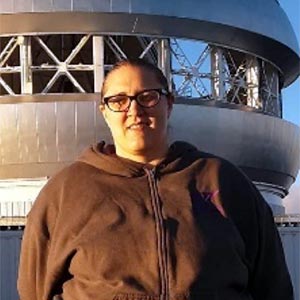
Jessica Ennis
Jessica Ennis is a physics professor at Augsburg University in Minneapolis, Minnesota. She obtained undergraduate degrees in Physics and Astronomy from the University of Maryland, and an M.S. in Astrophysics from the University of Minnesota. Her thesis research was on the Kepler and Cassiopeia A young supernova remnants, specifically using multi-wavelength observations from space-based telescopes. She has been teaching at Augsburg for ten years, and has recently expanded the popular astronomy for non-majors course to a study abroad/study away paradigm that includes engagement with native culture and celestial navigation. Recently, Jessica lead a two-week study away short-term program on Hawai’i Island. Students met scientists and toured facilities on Maunakea and Maunaloa while learning about native Hawaiian culture and navigation. Jessica is passionate about bringing learning outside of the classroom and creating culturally competent non-scientists who understand and appreciate the discipline of astronomy in its real world context.
In the past, Jessica has also lead Universe in the Park though the University of Minnesota and taught astronomy to Girl Scouts at the Bell Museum of Natural History. When not in the classroom teaching physics, astronomy, mathematics, or meteorology, she has be spotted on the roofs of Augsburg University searching for micrometeorites. She is married with two young children and lives in Oakdale, Minnesota.
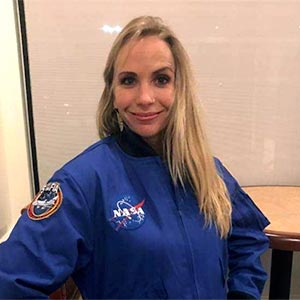
Christine Hirst
Christine Hirst-Bernhardt is on a mission to share her passion of space science with the world. She founded the West Ranch High School Astronomy Program (W.R.A.P.) and received a $275,000 grant from the California Department of Education to develop unique astronomy courses focused on space based experiments. These courses were designed as a model for use by any teacher in the State. Her students have conducted Martian geochemical studies with the Mars Space flight Facility, and have sent over 60 experiments to space on high altitude balloons. Her students and astronomy club have authored both NASA and ISS proposals and built a Dobsonian telescope. Additionally, she is a professor at College of the Canyons, where she teaches courses in Astronomy and Physical Science. Masters degrees in Planetary Science and Science Education have made her a much sought-after consultant for several content development firms, and she is a frequent presenter at some of the premier science teaching conferences in the United States. As a JPL/NASA Solar System Ambassador, she founded a community science program bringing STEM activities, NASA speakers and star parties to families in the Northern Los Angeles region. In 2017, Christine was selected to fly aboard NASA’s SOFIA mission. Outside of work, Christine is a champion mountain biker, adventurer, hiker and founder of the first all women’s professional extreme sports team (Vixen Racing). She lives in Southern California with her two amazing boys and husband, science educator extraordinaire Daniel Bernhardt. They seize every opportunity to travel the World. In recent years, they have backpacked to newly discovered El Mirador ruins in Guatemala, dove off of the Cambodian coast and spent 5 days exploring the largest cave system in Vietnam. Christine loves to find the road less traveled.
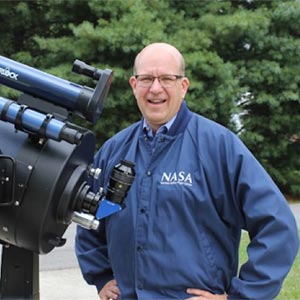
Billy Hix
Billy is a product of rural poverty in Tennessee. Growing up on a farm far from any lights, he had wonderful views of the night sky. He attended a small school that encouraged students to continue life on the farm. He was disciplined in the 5th grade for telling his class that he would work at NASA which shaped his adult life. He taught computer science in higher education and then worked at NASA/Marshall Space Flight Center. He taught his first outreach course to teachers in 1986. After returning to Tennessee, he taught future science teachers and made it his mission to provide STEM programs at schools across the state. He bought his first portable planetarium nine years ago. Taking early retirement in 2015, he started a foundation that allows him to visit over 100 rural schools each school year at no cost. Since his first planetarium program, 58,300 students and teachers have been part of his work. He was selected as TN Science Teacher of the Year; he was chosen as Motlow College Teacher of the Year a record seven times. He was selected as the Nation’s STEM Advocate by the Battelle Corporation and was recently honored by the Governor of Tennessee for his outreach. He has never forgotten the feeling as a young student that no one cared about his school or worst, how his teachers had no expectations of his peers. He has found that nothing inspires like the night sky. For fun, he spends evenings in his observatory in a field behind his home and is a motivational speaker to teacher groups across the nation.
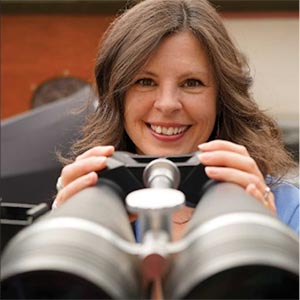
Carla Johns
Carla’s career in astronomy began with a view of Jupiter at the Denver Museum of Nature and Science during an adult education course. Since then, her passion for sharing the skies with kids of all ages (K-Gray) has guided her through an ever-evolving journey in science education. At the University of Colorado, she manages the membership program, marketing strategy, communications, and public shows for Fiske Planetarium. She also coordinates the K-12 outreach and tour program for Sommers-Bausch Observatory and serves as the webmaster for the Network for Exploration and Space Science, a SSERVI member team. Previously, Carla was a STEM Informal Science Educator at NASA JPL where she managed the daily operations of NASA’s Museum Alliance, a network of informal science educators. Additionally, she fostered community connections via portable planetarium shows and STEM enrichment activities for afterschool programs, science clubs, libraries, camps, and scouting groups. She was also a Telescope Demonstrator at Griffith Observatory and a 60” and 100” Telescope Operator at Mt. Wilson Observatory. Carla is involved in her community with the Denver Astronomical Society (where she first operated Chamberlin Observatory’s 20” Alvan Clark), Northern Colorado Astronomical Society, and as an Astronomy Volunteer in the Park at Rocky Mountain National Park. She is the Advertising Representative for the Astronomical League’s Reflector magazine and continues her relationship with JPL as a Solar System Ambassador. Carla has a Master of Science in Science Education/Astronomy from Montana State University and a Master of Education in Organizational Development from Colorado State University.
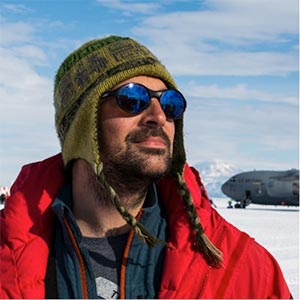
Mike Lucibella
Mike Lucibella is a science journalist and editor of The Antarctic Sun, the official newspaper of the U.S. Antarctic Program. As the staff journalist, photographer and podcast producer for the program, he reports directly from the frozen continent on the wide range of research that’s carried out at the bottom of the planet, including astronomy and astrophysics.
Antarctica is the highest, driest, coldest, windiest and emptiest continent on the planet; the perfect conditions to peer deep into the heavens. Astronomers use the continent as a platform to house some of the world’s top telescopes, retrieve meteorites and launch cutting-edge instruments into the stratosphere, all of which Mike has reported on.
Passionate about science communication, he is always looking for ways to bring the excitement of Antarctic research to diverse new audiences. He’s brought the excitement of science to school classrooms, comic conventions, nerd nights, science cafes and has even been known to perform science standup comedy.
His newest project, an effort called “Science Takes You Places,” brings together stories of researchers and science support staff in exotic locations to highlight how a STEM career can be the ticket to traveling the world and understanding the universe.
Before joining the USAP, Mike worked as the staff science writer for the American Physical Society, the largest physics society in the United States. He produced their newsletter, APS News, and worked with their outreach department to promote science and physics to the general public.
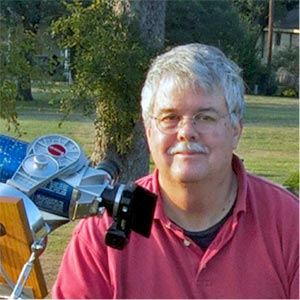
Rob Pettengill
Rob Pettengill is an engineer, astrophotographer, sidewalk astronomer, and volunteer astronomy educator from Austin, Texas. As a NASA JPL Solar System Ambassador, he helps schools and clubs. His BadAstroPhotos.com images and how-to content are free for non-commercial reuse by readers in 168 countries. In social media, his outreach is on Flickr, Facebook, Instagram, Cloudy Nights, and Quora, where he’s a “most read” astrophotography and amateur astronomy author.
Rob earned his Ph.D. at Stanford for research in medical microelectronics. At Texas Instruments, he designed integrated circuits for speech synthesis and recognition. He implemented computer-aided software design systems at MCC. As a principal engineer, he helped Schlumberger become a world leader in corporate knowledge management and web communications.
Today, he explores the limits of digital astrophotography with ultra-portable equipment. His day-lapse technique creates striking high-resolution images of the Moon with earthshine.
Rob has won accolades including awards from the Texas Star Party and Astronomical League, as well as many Flickr Explore selections. His images were featured on the BBC and Time Warner, as well as in Earth & Sky and Sky & Telescope. Rob combined art and outreach as a guest artist at Fisterra on the 2017 East Austin Studio Tour.
The Astronomical League named Rob an Outreach Master. He creates images using art and science to capture the impact of astronomy at the eyepiece — images that inspire first-time telescope users. He plans to use his ACEAP experience to help others use data from telescopes in Chile for their own images.
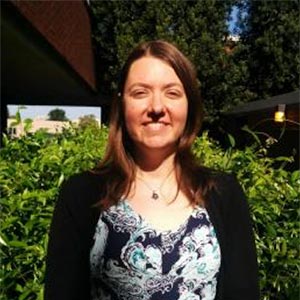
Laura Sparks
Laura Sparks is an astronomy instructor and department chair at Santa Rosa Junior College in Sonoma County, California. Laura holds a B.S. in physics from Arizona State University and an M.S. in physics from the University of Massachusetts, Amherst. She became an astronomy convert during her time as a UMass grad student while working on the VERITAS (Very Energetic Radiation Imaging Telescope Array System) project. She was hooked after spending a week climbing around on a giant telescope frame installing cabling. Since then, she has developed a passion for astronomy outreach, giving public talks at local astronomical society meetings and area libraries, supporting the Santa Rosa Junior College Planetarium, coordinating astronomy viewing nights, and even spending a summer with the National Park Service doing public astronomy at Bryce Canyon National Park.
In her teaching, Laura focuses on using astronomy as a vehicle for students to engage in authentic science experiences. She leads a unique observational astronomy class in which hundreds of students each year trek out to a dark sky location to learn astrophotography and visual observing techniques. This coming year she will be spending her sabbatical developing a free, open-source astronomy lab manual, and she is very excited to be able to incorporate cutting-edge science from the observatories in Chile into her work. Laura became an evangelist for radio astronomy after journeying to the Green Bank Telescope site and the Very Large Array, and she is absolutely thrilled to complete a 10-year-long goal of visiting the amazing Chile observatories.
“ACEAP has given me opportunities beyond exclusive tours of world-class observatories and incredible southern skies. Through this program, I have made connections with people that will last a lifetime.”
— Tiffany Stone, ACEAP 2018
Stay up-to-date with email updates.
Join our mailing list to receive the latest news and updates.
